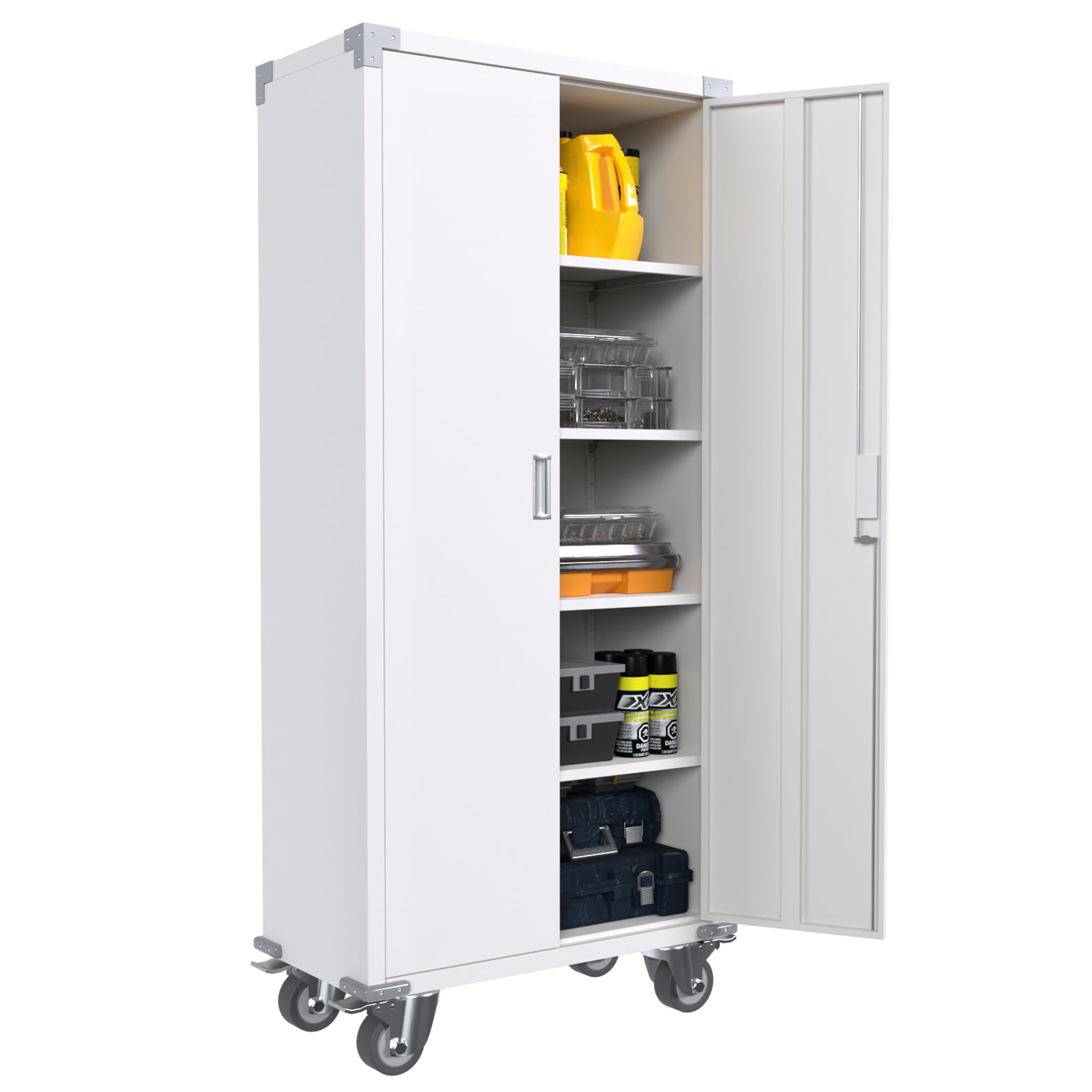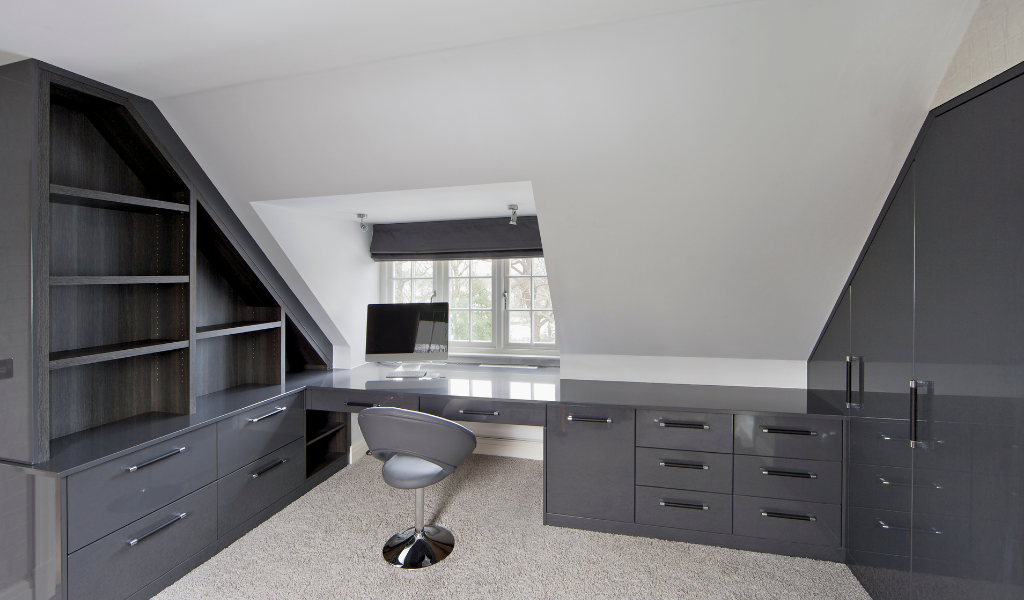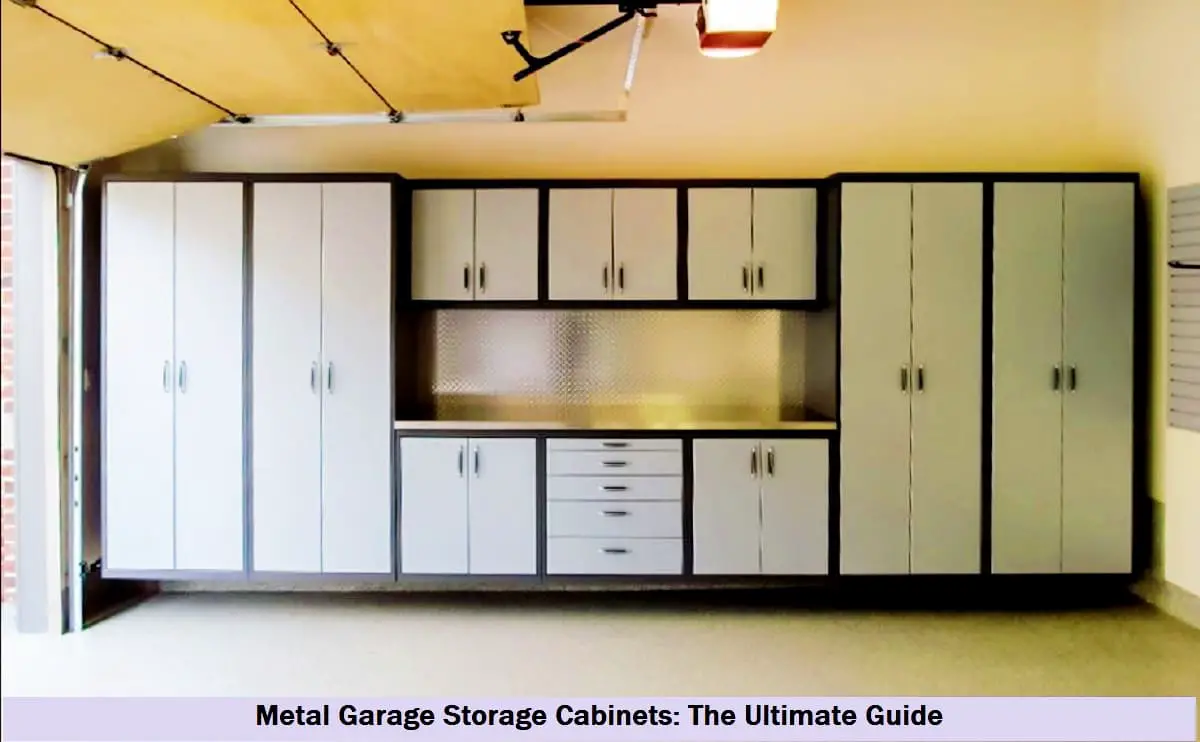Types of Storage Cabinets Based on Material

Storage cabinets are essential for organizing and storing various items in homes, offices, and other spaces. Choosing the right material for your storage cabinet is crucial, as it impacts its durability, cost, and aesthetic appeal. Here’s a breakdown of the most common materials used for storage cabinets and their advantages and disadvantages.
Storage Cabinets Made of Wood
Wood is a popular material for storage cabinets due to its natural beauty, versatility, and durability. It offers a wide range of styles, finishes, and colors to complement any décor.
Here are some advantages of using wood for storage cabinets:
- Natural Beauty: Wood offers a warm, inviting aesthetic that can enhance the look of any room. It comes in various grains and textures, allowing for customization and unique designs.
- Durability: High-quality hardwoods like oak, maple, and cherry are known for their strength and resistance to scratches and dents. They can last for generations with proper care.
- Versatility: Wood can be shaped, stained, painted, and finished in countless ways, making it suitable for various storage cabinet designs, from traditional to modern.
- Customization: Wood allows for personalized touches, such as custom sizes, intricate carvings, and unique finishes.
However, wood also has some disadvantages:
- Cost: High-quality hardwoods can be expensive, especially for custom-made cabinets.
- Maintenance: Wood requires regular cleaning and upkeep to prevent scratches, dents, and moisture damage. It may need refinishing over time.
- Susceptibility to Moisture: Wood can warp, crack, and rot if exposed to excessive moisture.
Common examples of wooden storage cabinets include:
- Bookcases: Made from sturdy wood, they are designed to hold books, decorative items, and other belongings.
- Wardrobes: Traditional wooden wardrobes provide ample storage space for clothing, accessories, and linens.
- Kitchen Cabinets: Wood is a popular choice for kitchen cabinets due to its durability, aesthetic appeal, and ability to withstand the demands of a busy kitchen.
Storage Cabinets Made of Metal
Metal storage cabinets are known for their durability, strength, and resistance to fire and water damage. They are often used in commercial and industrial settings but are also becoming increasingly popular in homes.
Here are some advantages of using metal for storage cabinets:
- Durability: Metal is highly resistant to scratches, dents, and impacts, making it ideal for heavy-duty storage needs.
- Fire Resistance: Steel and other metals are fire-resistant, providing added safety in case of a fire.
- Water Resistance: Metal is generally water-resistant, making it suitable for storing items in damp environments.
- Security: Metal cabinets can be equipped with locks and security features, providing added protection for valuable items.
Metal storage cabinets also have some disadvantages:
- Weight: Metal cabinets can be heavy, making them difficult to move or reposition.
- Aesthetics: Metal cabinets can have a more industrial look, which may not be suitable for all interior design styles.
- Rust: Metal can rust if exposed to moisture or humidity, requiring proper care and maintenance.
Common examples of metal storage cabinets include:
- File Cabinets: Metal file cabinets are designed to hold documents, files, and other office supplies securely.
- Tool Cabinets: Metal tool cabinets provide sturdy storage for tools, equipment, and other workshop items.
- Garage Cabinets: Metal garage cabinets offer durable and secure storage for tools, equipment, and other items stored in garages.
Storage Cabinets Made of Plastic
Plastic storage cabinets are becoming increasingly popular due to their affordability, lightweight design, and versatility. They are often used for organizing and storing items in homes, garages, and workshops.
Here are some advantages of using plastic for storage cabinets:
- Affordability: Plastic storage cabinets are generally more affordable than wood or metal cabinets.
- Lightweight: Plastic cabinets are lightweight and easy to move and reposition.
- Water Resistance: Plastic is water-resistant, making it suitable for storing items in damp environments.
- Variety of Colors and Styles: Plastic storage cabinets are available in various colors and styles to match different décor needs.
Plastic storage cabinets also have some disadvantages:
- Durability: Plastic cabinets are not as durable as wood or metal cabinets and can be prone to scratches and dents.
- Heat Sensitivity: Plastic can warp or melt under extreme heat, making it unsuitable for storing items in hot environments.
- Limited Customization: Plastic storage cabinets offer less customization options compared to wood or metal cabinets.
Common examples of plastic storage cabinets include:
- Storage Bins: Plastic storage bins are used for organizing and storing a wide range of items, from clothes and toys to tools and supplies.
- Under-Bed Storage: Plastic under-bed storage containers provide additional storage space for seasonal items, blankets, and other belongings.
- Outdoor Storage: Plastic storage sheds and cabinets are designed for storing outdoor items, such as lawn furniture, tools, and gardening supplies.
Comparing Wood, Metal, and Plastic Storage Cabinets
The following table summarizes the key characteristics of wood, metal, and plastic storage cabinets:
| Characteristic | Wood | Metal | Plastic |
|---|---|---|---|
| Durability | High (hardwoods) | Very High | Moderate |
| Cost | Moderate to High | Moderate to High | Low |
| Aesthetic Appeal | High | Moderate | Moderate |
| Maintenance | Moderate | Low | Low |
| Water Resistance | Low | High | High |
| Fire Resistance | Low | High | Low |
| Weight | Moderate | High | Low |
| Customization | High | Moderate | Low |
Ultimately, the best material for your storage cabinet depends on your individual needs and preferences. Consider the factors discussed above, such as durability, cost, aesthetics, and functionality, to make an informed decision.
Types of Storage Cabinets Based on Function

Storage cabinets are essential for organizing and storing various items in homes, offices, and other spaces. They come in different types, each designed to serve specific purposes. Understanding the various functions of storage cabinets allows you to choose the most suitable option for your needs.
Filing Cabinets
Filing cabinets are specifically designed for storing and organizing documents, files, and paperwork. They typically have drawers with hanging folders or file rails, allowing for efficient vertical storage and retrieval.
Filing cabinets offer numerous benefits:
- Organized Document Storage: Filing cabinets provide a structured and organized system for storing documents, ensuring easy access and retrieval.
- Protection from Damage: Filing cabinets often have features like locking mechanisms and fire-resistant materials to protect valuable documents from damage.
- Space Optimization: Filing cabinets efficiently utilize vertical space, maximizing storage capacity in limited areas.
- Improved Efficiency: By keeping documents organized, filing cabinets streamline workflows and enhance productivity.
Shelving Cabinets
Shelving cabinets are versatile storage solutions that provide open or enclosed shelves for storing various items, including books, supplies, tools, and more. They offer adjustable shelves, allowing you to customize the height and spacing to accommodate different items.
Shelving cabinets provide the following benefits:
- Flexibility and Adaptability: Adjustable shelves allow for customization to accommodate different item sizes and shapes.
- Easy Access and Visibility: Open shelves provide easy access and visibility to stored items, facilitating quick retrieval.
- Increased Storage Capacity: Shelving cabinets maximize vertical space, offering ample storage capacity.
- Variety of Materials: Shelving cabinets are available in various materials, such as wood, metal, and plastic, to suit different aesthetic preferences and needs.
Locking Cabinets
Locking cabinets are designed for secure storage of valuable items, such as cash, jewelry, documents, or sensitive equipment. They feature locking mechanisms, often with key locks or electronic combinations, to prevent unauthorized access.
Locking cabinets offer several advantages:
- Security and Protection: Locking mechanisms provide a secure barrier against theft and unauthorized access.
- Peace of Mind: Locking cabinets offer peace of mind, knowing that valuable items are protected from potential risks.
- Durability and Strength: Locking cabinets are typically made from durable materials to withstand forced entry attempts.
- Variety of Sizes and Styles: Locking cabinets are available in various sizes and styles to accommodate different storage needs.
Table of Storage Cabinet Types
| Type | Primary Function | Common Features |
|---|---|---|
| Filing Cabinets | Storing and organizing documents, files, and paperwork | Drawers with hanging folders or file rails, locking mechanisms, fire-resistant materials |
| Shelving Cabinets | Storing various items, including books, supplies, tools, and more | Adjustable shelves, open or enclosed shelves, variety of materials (wood, metal, plastic) |
| Locking Cabinets | Secure storage of valuable items, such as cash, jewelry, documents, or sensitive equipment | Locking mechanisms (key locks or electronic combinations), durable materials, various sizes and styles |
Types of Storage Cabinets Based on Size and Configuration

Storage cabinets come in various sizes and configurations, catering to diverse storage needs and space constraints. Understanding the different types of cabinets available allows you to choose the most suitable option for your specific requirements.
Vertical Storage Cabinets, Types of storage cabinets
Vertical storage cabinets maximize space utilization by extending upwards, offering a significant amount of storage capacity within a smaller footprint. They are ideal for storing items that are not frequently accessed or are bulky and require vertical stacking.
Vertical storage cabinets offer several advantages, including:
- Efficient Space Utilization: Vertical cabinets optimize vertical space, allowing for more storage in limited floor areas. This is particularly beneficial in smaller rooms or areas with limited floor space.
- Increased Storage Capacity: By extending upwards, vertical cabinets offer a significantly higher storage capacity compared to horizontal cabinets of similar width.
- Accessibility: Reaching the top shelves of vertical cabinets may require ladders or step stools, which can be a drawback for individuals with mobility limitations.
Horizontal Storage Cabinets
Horizontal storage cabinets are designed for easy access to stored items, with shelves arranged at a comfortable height for retrieval. They are suitable for storing items that are frequently accessed, such as tools, equipment, or everyday supplies.
Horizontal storage cabinets offer the following benefits:
- Accessibility: The shelves are positioned at a comfortable height, making it easy to access and retrieve stored items.
- Versatility: Horizontal cabinets are versatile and can be used in various settings, including homes, offices, workshops, and garages.
- Limited Storage Capacity: Horizontal cabinets typically have a lower storage capacity compared to vertical cabinets of similar dimensions.
Modular Storage Cabinets
Modular storage cabinets are customizable systems consisting of individual units that can be combined to create a unique configuration tailored to specific storage needs. These units are typically interchangeable, allowing for flexible arrangements and adjustments as storage requirements evolve.
Modular storage cabinets offer the following advantages:
- Customization: The ability to combine individual units allows for flexible configurations to meet specific storage needs.
- Adaptability: Modular cabinets can be easily rearranged or expanded as storage requirements change, making them ideal for evolving storage needs.
- Cost-Effective: Modular systems allow for gradual investment, starting with a basic configuration and adding units as needed.
Visual Representation of Storage Cabinet Sizes and Configurations
Imagine a visual representation showcasing various storage cabinet sizes and configurations. It could include:
- Vertical Cabinets: A tall, narrow cabinet with multiple shelves extending from floor to ceiling. This could be ideal for storing linens, blankets, or seasonal clothing in a bedroom closet.
- Horizontal Cabinets: A shorter, wider cabinet with shelves arranged at a comfortable height. This could be perfect for storing kitchenware, office supplies, or tools in a workshop or garage.
- Modular Cabinets: A combination of individual units, such as drawers, shelves, and cabinets, assembled to create a customized storage solution. This could be used to organize a home office, a bathroom, or a workshop.
Types of storage cabinets – From the humble pantry cabinet to the grand armoire, storage solutions have always been a cornerstone of home organization. But for a truly captivating kitchen, consider the allure of dark blue cabinets. Dark blue kitchen cabinets images will inspire you with their richness and depth, a testament to the timeless beauty of classic design.
No matter your storage needs, whether it be open shelving, pull-out drawers, or hidden compartments, the right cabinet style can transform your kitchen into a haven of functionality and elegance.
From the humble pantry cabinet to the grand armoire, storage cabinets have been a part of our lives for centuries, each type reflecting a different need and style. For a touch of modern elegance, consider dark blue lower cabinets with white uppers – a combination that brings a sense of sophistication and vibrancy to any kitchen.
No matter your preference, the right storage cabinet can transform your space, creating a haven of order and beauty.